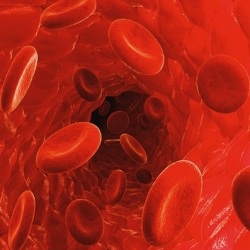
A recent finding by scientists from the Hospital for Sick Children, Toronto, and Duke University challenges long-held ideas about why our bones have a harder time healing as we age. Their research discovered that old bones mend like youthful bones do when they’re exposed to young blood after a fracture.
“The traditional concept is that as you get older, your bone cells kind of wear out so they can’t heal as well, and we thought we’d find that during this study as well,” explains study co-author Benjamin Alman, of the Hospital for Sick Children. “But it turns out that it’s not the bone cells, it’s the blood cells. As you get older, the blood cells change the way they behave when you have an injury, and as a result the cells that heal bone aren’t able to work as efficiently.”
When a bone is fractured, significant bleeding occurs at the site. Inflammatory blood cells help spur the process by which new bone cells heal the break over time. Alman and colleagues found that the blood cells of older mice don’t drive this healing the way younger blood cells do, but they also wanted to see how those older bones would heal when exposed to young blood.
The experiment suggests that young blood cells secrete some as-yet-unknown molecule, likely a protein or possibly some other chemical, that speeds up the healing of fractured bone. The molecule apparently does so by regulating levels of beta-catenin in bone cells known as osteoblasts. Keeping beta-catenin at the proper levels appears crucial for the formation of new high-density bone.
